
The education, research and innovation continues
By Natalie MacGregor
This year marks the 125-year commemoration of UQ’s Gatton campus, including its long and storied history as the Queensland Agricultural College (QAC) before amalgamating with UQ in 1990.
It’s one of the oldest tertiary institutions in Queensland.
As Professor Nigel Perkins from UQ’s Gatton-based School of Veterinary Science said, you can’t go far in regional Queensland without finding someone with a direct link to Gatton or QAC.
“They’d either been there, or their sister or brother or friend had, or they knew someone who'd been there, or they had been there themselves – and the connection is always positive, at a level that just amazes me still today, Professor Perkins said.
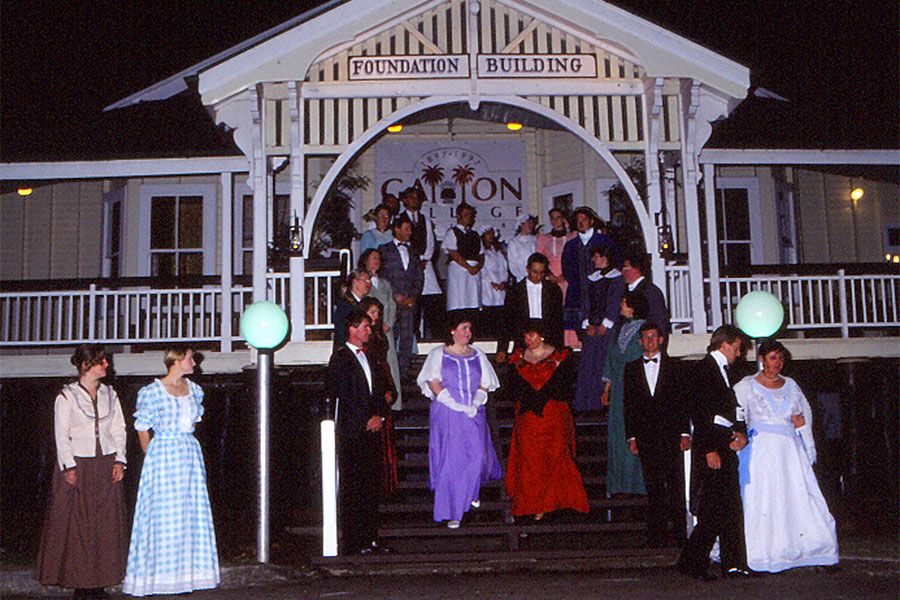
Guests attend the re-opening of the Foundation Building at the Gatton campus in 1996. Image: UQ Archives
Guests attend the re-opening of the Foundation Building at the Gatton campus in 1996. Image: UQ Archives
“There’s a deep connection to that history of QAC.
“Because the bush population is so low and because there’s that shared connection – if you go to University of Sydney or University of Melbourne, then you think about the 100-year history, there is no great link between someone who studied history there 100 years ago versus someone who studied economics or medicine – but all of the bush kids who went to QAC shared the same sort of history.
“It’s a much more uniform exposure and a very strong link,” he said.
It’s a point that former Gatton Campus Director Ann Keep agrees with.
The recently retired Qandamooka woman, who spent 12 years at the helm, said that the campus had a long history of family tradition and a tendency to get under the skin.
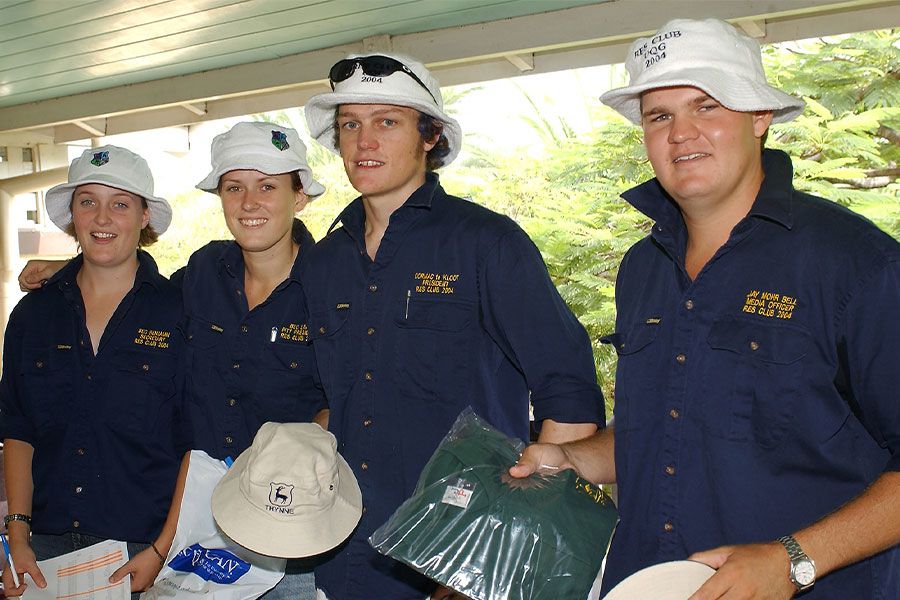
Members of the Gatton Student Residence Club in 2004. Image: UQ Archives
Members of the Gatton Student Residence Club in 2004. Image: UQ Archives
“Parents studied at Gatton and then their children followed in their footsteps, studying there too,” she said.
“There are broad intergenerational links. At one stage, anyone in Queensland – and our border neighbours – interested in studying agriculture went there.”
She said she also had a long-standing personal connection with the campus.
“When I was in high school, our final-year excursion was to the (then) Gatton college.
“I thought it was an amazing facility. So, while I didn’t go into agriculture, it’s interesting that my life eventually circled back to Gatton.”
History looms large at Gatton, in part because of the highly active Gatton Past Students Association (GPSA).
President Mark Pace, himself a Gatton graduate and former staff member with links to the School of Agriculture and Food Sciences, said the strong community links began long ago, as most students lived on site.
“The association’s been going since around about 1924 with a few variations in name,” he said.
“You have to realise that that connection and linkage is intrinsic to the culture of the campus, and the reason it’s so active is that the campus had very much a community structure.
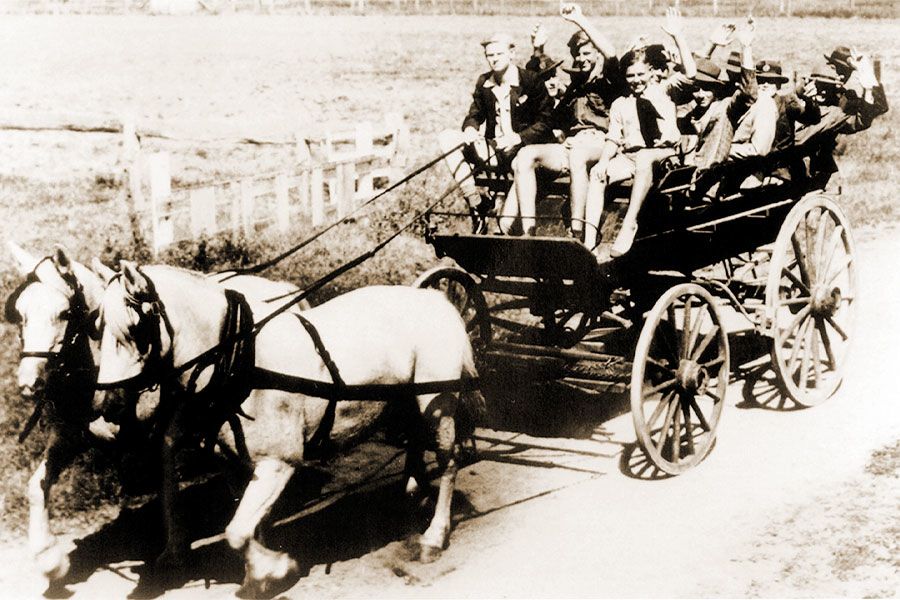
Students riding a wagon to class in 1935. Image: UQ Archives
“It was largely residential and there was also that really strong connection between staff and students,” Mr Pace said.
“Those formative years, and let’s face it, most of us were only there between one and 5 years, seem to be incredibly formative.
“For many of us in the association, the friends that you have in your life, there’s a good chance that they are connections that you made at the campus.”
The first students began their studies in 1897, when the Queensland Agricultural College was formally opened with the motto, Science with practice, a motto remembered fondly by all who graduated from Gatton.
The GPSA keeps the stories alive, and there are many stories.
During World War II, 85 acres of land and most of the campus buildings were requisitioned for a US Army hospital.
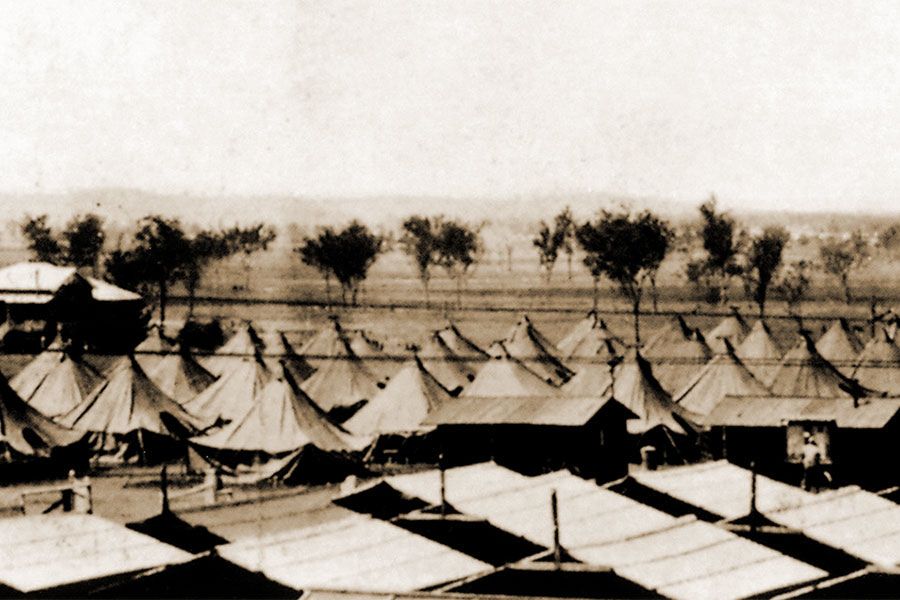
The US Army camp at the Gatton campus in 1945. Image: UQ Archives
The war effort also included extensive crop and livestock production.
The myth of the water tower is another story retold at many gatherings. Built in 1928–29 to ensure a reliable water supply, at the time it was the tallest artificial structure in the Lockyer Valley.
“There are more than a few myths, and the water tower has more stories than can possibly be captured,” Mr Pace said.
The legend dates back to 1955, when it was discovered that someone had attached a large set of footprints up the tower. The outraged Principal ordered their removal.

The water tower (far left), where large footprints were reported to be found in 1955. Image: UQ Archives
One version of the story suggests that the next morning the campus woke to find the same footprints – but this time coming down from the tower.
“I’ve heard that story probably more times than I can count,” Mr Pace said.
“The interesting thing is I have never heard the same story twice, so the dates change, the people change, probably even the direction of the footprints change.”

Students riding a wagon to class in 1935. Image: UQ Archives
Students riding a wagon to class in 1935. Image: UQ Archives

The US Army camp at the Gatton campus in 1945. Image: UQ Archives
The US Army camp at the Gatton campus in 1945. Image: UQ Archives

The water tower (far left), where large footprints were reported to be found in 1955. Image: UQ Archives
The water tower (far left), where large footprints were reported to be found in 1955. Image: UQ Archives
But it’s not just the strong ties to community that make the campus so special.
There have also been some major scientific achievements with origins at Gatton.
The School of Agriculture and Food Sciences has built an amazing global reputation, with its international ranking rising from seventh place in 2016, to number 2 in 2021.
“It’s a great achievement, but we aspire to be number one,” Ms Keep said.
“We have had so many researchers recognised globally, revolutionising agriculture across the world.”
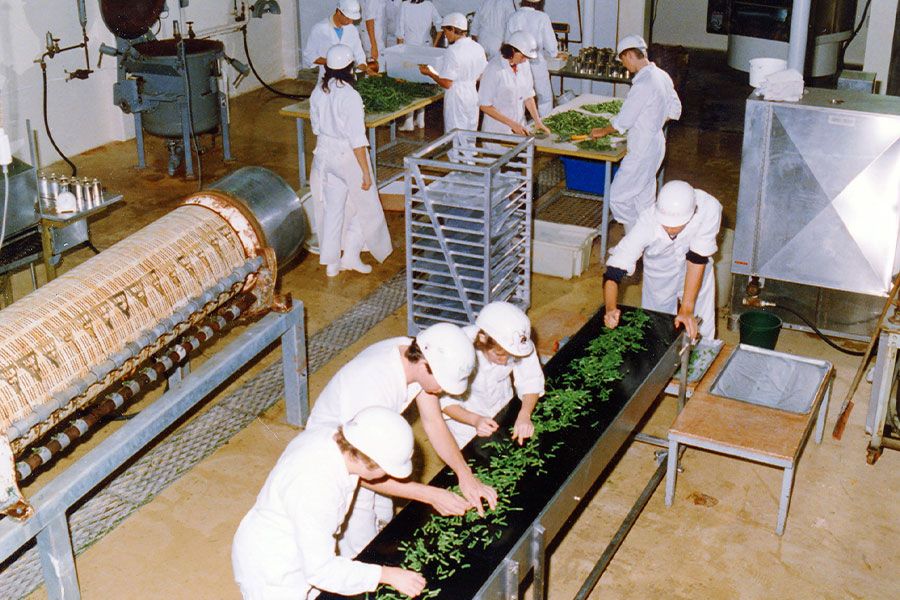
Food technology students at the Gatton campus in 1990. Image: UQ Archives
Food technology students at the Gatton campus in 1990. Image: UQ Archives
UQ and the Gatton campus are part of the recently announced Food and Beverage Accelerator (FaBA) project, awarded $50 million dollars in federal government Trailblazer funding over 4 years.
The project will supercharge commercialisation in the food and beverage industry and has the potential to create thousands of jobs. The aim is to double the value of Australia’s food and beverage manufacturing sector by 2030.
There’s also a $1.5 million collaboration between UQ and Indigenous Traditional Owners and Custodians launched at Gatton last year to boost the bushfood industry and create Aboriginal and Torres Strait Islander businesses.
The Australian Research Council-funded (ARC) 5-year project, A Deadly Solution: Towards an Indigenous-led bushfood industry, allows researchers to work with Indigenous communities to commercialise native bushfoods and ornamental plants.
Professor Perkins said the School of Veterinary Science had also had global success with research in marine mammals, disease control and production in livestock species in South-East Asia and elsewhere, and improving smallholder livelihoods in developing countries.
“If we control major diseases in poultry and pigs, for example, can we improve human health and livelihood and wellbeing in developing countries?” he said.
“That’s veterinary science. It touches people every day.”
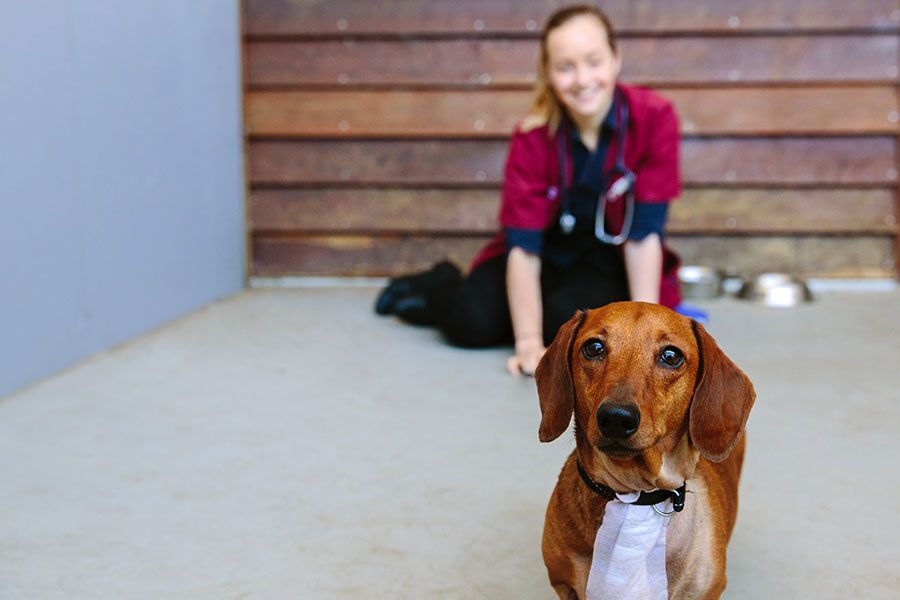
UQ VETS Small Animal Hospital intern veterinarian Dr Michaela Swan with a cute recovering patient in 2017. Image: Anjanette Webb
UQ VETS Small Animal Hospital intern veterinarian Dr Michaela Swan with a cute recovering patient in 2017. Image: Anjanette Webb
Another example is the development of a kit to detect Hendra virus, which kills horses and people.
”We will be working with government agencies to develop a rapid test to be deployed in the field that will help horse owners and vets manage their own health risks when providing health care for horses,” Professor Perkins said.
The Queensland Alliance for Agriculture and Food Innovation's (QAAFI) crop research is also a focus, with projects like the speed crop-breeding studies inspired by NASA, and a crop or ‘library’ of half a million genetically diverse sorghum plants growing to help future-proof cereal production in a changing climate.
As those at Gatton mark 125 years and reflect on a rich history, they are also looking to the future on what Professor Perkins describes as a very special anniversary.
“It's wonderful to be part of a university that has a commitment to global quality and all of the positive messages in a globally ranked and recognised university, and to have that sit on the 125-year old legacy of QAC, that is deeply connected to community, I think it's just really, really wonderful,” he said.

Students show off a cabbage at The Ekka in 1999. Image: UQ Archives
Students show off a cabbage at The Ekka in 1999. Image: UQ Archives
“It's fascinating to be part of the growth of Gatton campus, to build connections locally, and to continue to be part of a university that is strongly committed to building Gatton campus as a flagship, as a global leader in ag science, animal science, horticulture, and veterinary science: that is just stimulating.”
Mr Pace agrees.
“If I were to put my take on it, the 125th anniversary is very much about acknowledgement, recognition, almost paying homage to the achievements of the Gatton campus; but, to me, it’s a reset button,” Mr Pace said.
“And as much as we work hard to preserve and acknowledge the history, I think it’s a moment to recognise the capacity that is within the campus and to take it into the future.
“I think it’s an uplifting moment where we can actually, with a collegial and a collaborative spirit, really embrace it and take it forward now.”
Gatton 125: back to campus photos
UQ alumni, staff and community members gathered at UQ Gatton on 2 July 2022 to celebrate the 125-year anniversary of the campus. The festivities included campus tours, talks, live music, activities for the kids, as well as a long-table lunch on the verandah of the Foundation Building.


